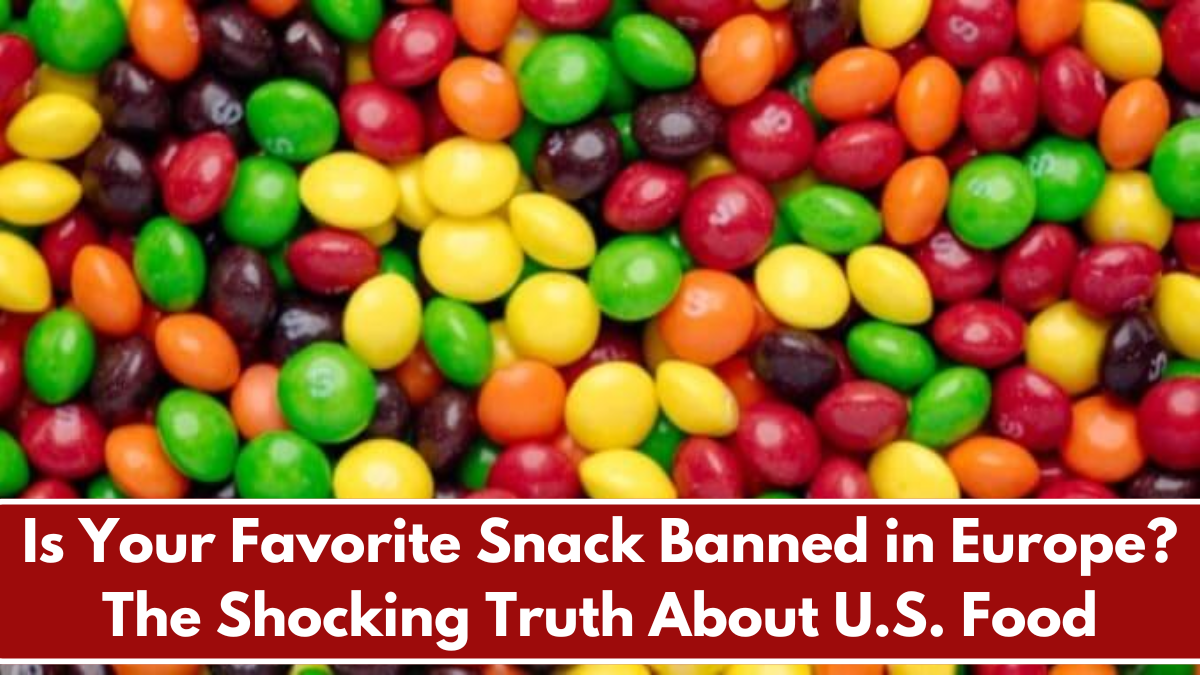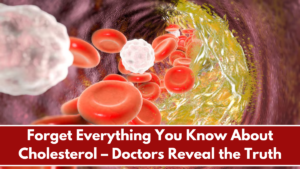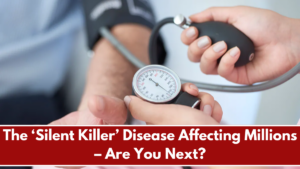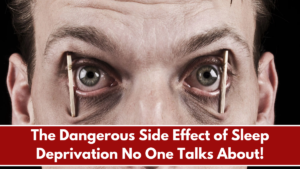Many Americans are unaware that some of their favorite foods are banned in Europe and other parts of the world due to safety concerns. While the U.S. Food and Drug Administration (FDA) allows certain ingredients and additives in processed foods, European regulatory bodies have stricter standards regarding artificial dyes, preservatives, and genetically modified organisms (GMOs). As a result, snacks that are staples in American households may contain controversial ingredients that have been linked to health risks. But why is the same food deemed safe in the U.S. yet banned elsewhere? And what does this say about food regulations in different parts of the world? This article explores the shocking truth about U.S. food products that are outlawed in Europe and the reasons behind these bans.
The Differences Between U.S. and European Food Regulations
The U.S. and Europe take fundamentally different approaches to food safety. In the U.S., the FDA and the U.S. Department of Agriculture (USDA) regulate food and additives, but they often follow a “safe until proven harmful” approach. This means that additives and chemicals are permitted unless there is overwhelming evidence proving their harm. Conversely, the European Food Safety Authority (EFSA) follows the “precautionary principle”, meaning that an ingredient must be proven safe before being allowed in the food supply. This stark contrast explains why certain food additives and processing methods that are widely used in the U.S. are strictly regulated or outright banned in Europe.
Common U.S. Food Ingredients Banned in Europe
1. Artificial Food Dyes (Red 40, Yellow 5, and Yellow 6)
Artificial food colorings, particularly Red 40, Yellow 5, and Yellow 6, are commonly found in cereals, candies, sodas, and snack foods in the U.S. However, these dyes have been linked to hyperactivity in children, allergic reactions, and potential carcinogenic effects. In Europe, food manufacturers must either remove these dyes or include warning labels informing consumers of their risks. As a result, many European versions of U.S. snacks—such as M&Ms and Fanta—are made with natural colorings like beet juice and turmeric.
2. Brominated Vegetable Oil (BVO)
BVO is a chemical additive used to keep citrus flavors evenly distributed in sodas and sports drinks. It contains bromine, the same element found in flame retardants, and has been linked to neurological issues, thyroid problems, and organ damage. Due to these concerns, BVO is banned in Europe, Japan, and India. However, in the U.S., it has only recently begun to be phased out by some companies due to consumer pressure.
3. Potassium Bromate
Potassium bromate is a flour treatment additive used to strengthen dough and improve the texture of baked goods like bread and rolls. Studies have shown that potassium bromate is a carcinogen linked to kidney and thyroid cancer. While it is banned in Europe, Canada, and China, it is still permitted in the U.S. because the FDA considers it safe when used in small amounts. Some American bakeries have voluntarily removed it, but it remains a hidden danger in many processed bread products.
4. rBGH (Recombinant Bovine Growth Hormone)
rBGH is a synthetic hormone given to dairy cows to increase milk production. It has been associated with increased risks of cancer, antibiotic resistance, and reproductive issues in humans. Because of these health concerns, rBGH is banned in the European Union, Japan, and Canada. Meanwhile, in the U.S., dairy products from rBGH-treated cows are still sold without mandatory labeling, making it difficult for consumers to avoid.
5. Azodicarbonamide (ADA)
Azodicarbonamide is a dough conditioner used in bread, pizza crusts, and baked goods to improve texture. However, this same chemical is used in yoga mats and shoe soles due to its ability to make materials more elastic. The World Health Organization (WHO) has linked ADA to respiratory issues and an increased risk of cancer, leading to its ban in Europe and Australia. In the U.S., it remains legal despite health concerns, although public backlash has led some companies, such as Subway, to remove it from their products.
6. High-Fructose Corn Syrup (HFCS)
High-fructose corn syrup is widely used in American sodas, candies, and processed foods due to its cheap cost and ability to enhance sweetness. However, HFCS has been linked to obesity, diabetes, and fatty liver disease. While it is not outright banned in Europe, it is heavily restricted, and many European food manufacturers use natural sweeteners like cane sugar instead. This is why European versions of popular U.S. sodas often taste different and are perceived as less sweet.
7. Titanium Dioxide
Titanium dioxide is used in products like candies, chewing gum, and salad dressings to give them a brighter, whiter appearance. However, research suggests that it may cause cell damage and increase the risk of cancer. In 2022, the European Union banned titanium dioxide as a food additive, citing safety concerns. Despite this, it is still widely used in the U.S. food industry.
Why Do These Ingredients Remain Legal in the U.S.?
One major reason these ingredients continue to be used in the U.S. is corporate lobbying and economic interests. The food industry is a powerful force, and many large corporations invest heavily in preventing stricter regulations. Additionally, because the FDA follows a “safe until proven harmful” policy, companies are not required to prove the long-term safety of these ingredients before using them. In contrast, European regulators prioritize consumer safety over corporate profits, leading to stricter regulations and safer food options.
What Can Consumers Do?
The fact that many popular American snacks are banned in Europe should serve as a wake-up call for consumers to be more conscious of what they eat. While U.S. food laws may lag behind European standards, consumers still have the power to make informed choices. Reading ingredient labels, opting for organic and non-GMO products, and choosing brands that avoid harmful additives are simple steps to reduce exposure to questionable chemicals. As awareness grows, consumer demand may eventually push U.S. food companies to adopt healthier practices, just as some have already done in response to public outcry. Until then, it’s up to individuals to take control of their health and be mindful of what’s really in their favorite snacks.
FAQ’s:
1. Why are some U.S. foods banned in Europe?
The primary reason some American foods are banned in Europe is due to differences in food safety regulations. The European Union follows a “precautionary principle,” which means that food additives must be proven safe before they can be used. In contrast, the U.S. follows a “safe until proven harmful” approach, allowing many additives unless there is overwhelming evidence against them. This results in Europe banning ingredients that have been linked to potential health risks, such as artificial dyes, brominated vegetable oil (BVO), and certain preservatives that are still legal in the U.S.
2. Are American sodas different from European versions?
Yes, American sodas often contain high-fructose corn syrup (HFCS), artificial sweeteners, and chemical additives, while European sodas use more natural ingredients. In Europe, many soft drinks are sweetened with cane sugar instead of HFCS, which has been linked to obesity and metabolic issues. Additionally, artificial colors like Red 40 and Yellow 5, which are common in U.S. sodas, require warning labels in Europe or are replaced with natural alternatives like beet juice or turmeric.
3. Is fast food healthier in Europe than in the U.S.?
In many cases, yes. European fast food chains tend to use fewer artificial additives and preservatives, and meats may come from farms that avoid synthetic hormones and antibiotics. For example, McDonald’s fries in the U.S. contain preservatives and artificial flavorings, while their European counterpart has simpler ingredients like potatoes, salt, and oil. Similarly, chicken products in the EU often come from farms with stricter animal welfare and feed regulations, reducing the presence of harmful substances in the meat.
4. Do U.S. companies change their recipes for European markets?
Yes, many multinational companies adjust their products to meet stricter European food regulations. Brands like Coca-Cola, Kellogg’s, and Kraft reformulate their products by removing banned ingredients and replacing them with safer alternatives. For example, Skittles sold in Europe do not contain titanium dioxide, an additive banned in the EU but still used in the U.S. Similarly, Fanta in Europe is made with real sugar and natural colors, while the U.S. version contains high-fructose corn syrup and artificial dyes.
5. What are the most dangerous banned additives still used in the U.S.?
Several controversial food additives remain legal in the U.S. despite being banned in Europe due to health concerns. Some of the most alarming include potassium bromate, which is linked to cancer and used in bread products; BVO, which is associated with organ damage and found in citrus-flavored sodas; rBGH, a growth hormone used in dairy cows that has been linked to increased cancer risk; and artificial dyes like Red 40 and Yellow 5, which have been associated with hyperactivity and allergic reactions.
6. Can American consumers avoid these harmful ingredients?
Yes, but it requires careful label reading and a conscious effort to choose healthier alternatives. One way to avoid harmful additives is to opt for organic or non-GMO foods, which are regulated to exclude synthetic additives and growth hormones. Consumers can also look for products labeled as “artificial color-free” or “BVO-free.” Additionally, shopping at health-conscious grocery stores, such as Whole Foods or Trader Joe’s, can help individuals avoid many of the banned substances found in mainstream processed foods.
7. Why doesn’t the FDA ban these ingredients?
The FDA has a different regulatory approach compared to European agencies. In the U.S., food additives and chemicals are considered safe until strong scientific evidence proves otherwise. Additionally, corporate lobbying plays a major role in delaying regulatory changes. Large food manufacturers and agricultural industries often resist stricter regulations because reformulating their products to exclude banned ingredients can be costly. As a result, many ingredients remain in circulation despite growing health concerns.
8. Are there efforts to ban these ingredients in the U.S.?
Yes, consumer advocacy groups and scientific organizations have been pushing for stricter food safety regulations. Some states, such as California, have proposed laws to ban harmful additives like Red 40 and BVO. Public awareness has also led major food companies to voluntarily remove controversial ingredients from their products due to consumer demand. For instance, in response to backlash, Subway removed azodicarbonamide, a chemical found in yoga mats, from its bread. While progress is slow, increasing consumer pressure is leading to gradual changes in the food industry.
9. Do other countries follow European food bans?
Yes, many other countries, including Canada, Japan, and Australia, have adopted food safety standards similar to Europe’s. For instance, Canada has banned rBGH in dairy products, and Japan prohibits the use of certain artificial preservatives and flavor enhancers that are still legal in the U.S. These countries prioritize consumer health and require stronger safety testing before allowing food additives into the market. As a result, American food products are often reformulated or restricted in these regions.
10. How can I eat healthier in the U.S.?
To eat healthier and avoid potentially harmful additives, consumers should prioritize whole, minimally processed foods. Opting for organic produce, grass-fed meats, and dairy products labeled “rBGH-free” can reduce exposure to controversial ingredients. Additionally, checking food labels for artificial colors, preservatives, and high-fructose corn syrup can help consumers make better choices. Shopping at farmers’ markets and cooking meals from scratch can also ensure a cleaner, more natural diet free from questionable additives found in many processed foods.



